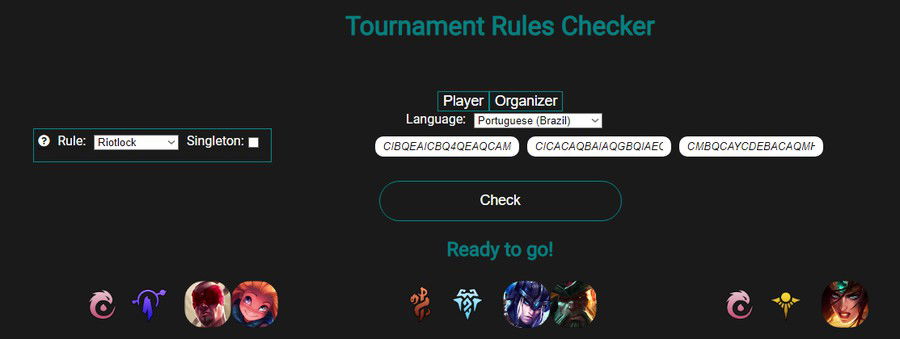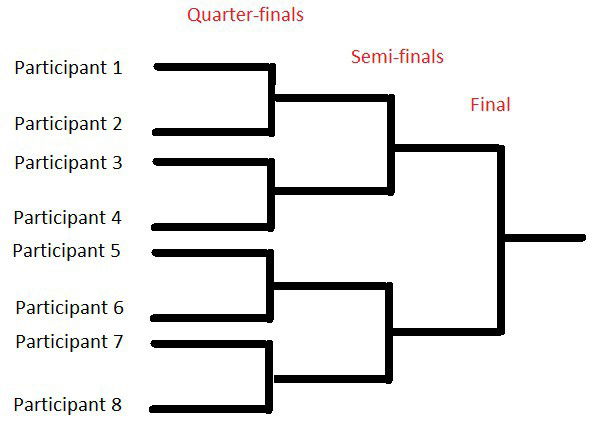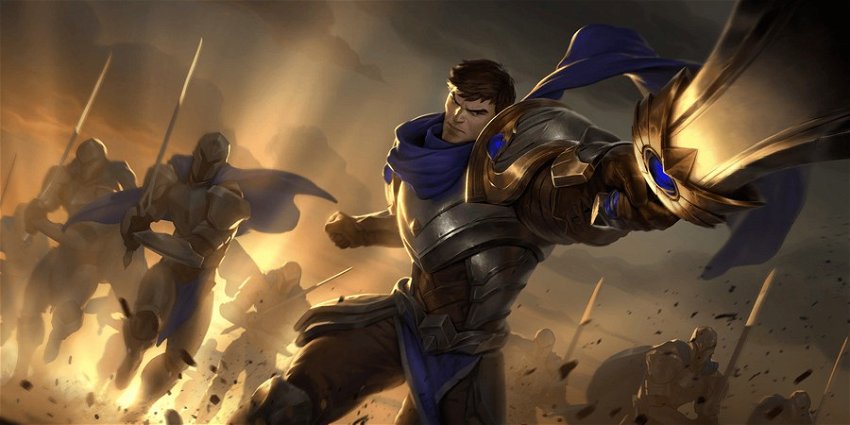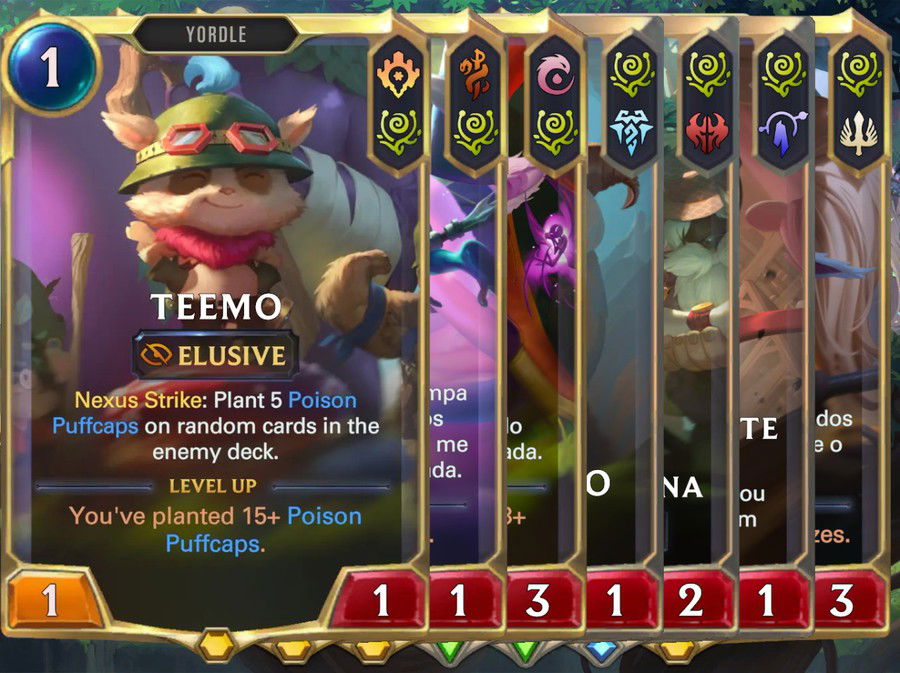Hey, guys, how are you? In this article I'll explain the LoR tournaments, the deck locks a tournament may have and also give you an amazing tool that can help you even more. Let's go!
Introduction
Before mentioning the types of tournament, I think it's more interesting that we begin with the existing deck locks. This term defines the 3 decks to use in the tournament. This will be your line-up.
And remember: In LoR, we use 40 card decks and for now there isn't a "sideboard". Maybe there will be one in the future when they increase the number of cards in the game, but at the moment it doesn't exist. So you build a 40 closed card deck and can't include anything in the middle of the tournament, okay?!
Deck Locks
Riot Lock
The most common lock today is "Riot Lock", which Riot itself introduced and other organizations followed suit. It's based on you picking 3 decks which can't have repeated champions, repeated region combinations and only 1 deck can be champion-less. Example: Lulu Jinx (Ionia and Piltover); Draven and Ezreal (Noxus and Piltover); Seju Teemo (Freljord and Piltover).
Notice that I put 3 Piltover decks, but none of them repeat the other regions or the same champions. This lock was created precisely to be more accessible to everyone, because you wouldn't need to have a full collection. Just use the same base for all of them and switch the champions and the other region.
Ad
Region Lock
The second option is "Region Lock", which, as the name tells us, it's not allowed to repeat regions. Without repeating regions, no champion can be repeated also. Example: Lulu Jinx (Ionia and Piltover); Elise (Noxus and Shadow Isles); Miss Fortune and Quinn (Bilgewater and Demacia).
Usually this lock appears in tournaments with a double elimination format, but instead of 3 decks the organization only asks 2 decks and like so you and the opponent don't need to ban a deck.
Card Lock
Lastly, we have "Card Lock". This one is a little more difficult for even organizations to check, because in all three decks you can't repeat a card. It is a little more complex and also not very used.
But assuming you bring a Thresh Nasus deck where there is only one copy of Atrocity, any other deck can even have the same region combination (Shurima and Shadow Isles), but it can't bring Atrocity anymore, or even the champions, because they also count as cards.
In case you don't know if your deck is following the requested lock, there is a tool made by a programming queen called Raquel, known as Tecna in the brazillian community: just click here.

Ad
Now that we understand the types of locks there are, let's look at tournament types!
Swiss Rounds
As other card games and electronic games in general, LoR doesn't go out of the norm when it comes to tournaments. The most used format is swiss rounds, where all players face all players in a X number of rounds, which depends on the amount of players. Assuming the tournament has 32 players, the system (like Battlefly) points to 4 to 6 rounds and the organizer decides how many rounds there will be in all. Like so, the best players will be defined by those who score 6-0, 5-1 and so on and so forth.
In general, in swiss rounds tournaments the most common lock is RiotLock, so you choose 3 decks and ban an opponent's deck.
The tournaments can also be extended to a top cut after the swiss rounds bringing in the 32, 16 or 8 best ranked. This type of format is used right now in the Seasonal Tournament, in which the qualifiers have 9 swiss rounds and the top 32 advance to the next phase, which is in single elimination.
To those who aren't aware, the Seasonal Tournament is Riot's official tournament and it is separated by server region shards, such as Americas, Europe, and APAC (Asia - Pacific). 700 players are qualified through ranked ladder and 324 through the final gauntlet.

Single Elimination
Ad
The single elimination format is also used in a couple tournaments without Swiss rounds prior, but it is not that common. They are the famous knockout rounds, used in a lot of sports throughout the world. This format is also used in best of 1 matches, and not in the common best of 3 matches we have in Swiss rounds. Because of that, the type of lock usually doesn't matter, because it is only one game, so you can play with any deck.

Double Elimination
Another format would be double elimination, which is very similar to single elimination, but the player has one more chance if they lose in the first round.
If the player loses in the second round, they are completely eliminated from the tournament, that is, whoever loses a round has to follow through the famous warrior path and can't lose any more rounds to try and take the trophy.
This format is used a lot in tournaments where we have more "show matches", which are tournaments with closed guests where the focus is entertainment.

Line-Ups
Ad
After all this, we have to think about the line-up possibilities, that is, which decks you want to bring to a tournament. Above anything else, always bring decks you're comfortable with. No good at playing a meta-game line-up and not knowing how to pilot it, isn't it?
But as we joke around: there are 3 ways to build your line-up:
1) the meta abusers
2)targeting the meta abusers
3)targeting who wants to target the meta abusers. Simple, right? As if, LOL.
An example of this would be the current meta: Sivir Akshan, GP Sejuani and Azir Irelia. All three lose to a triple aggro lineup, so triple aggro is an answer to them, and triple control lineups are an answer to triple aggro. This keeps going on in every tournament, and decks change as the meta changes.
You can check out a a tutorial on how to build line-ups for tourneys by our dearest Minako here.
Prizes
Ad
There is a lot of debate going on in our current LoR community regarding money prizes. Because of the smaller size of the game, not many people consider it valid to pay registration fees in tournaments that can reward a nice cash prize to the winners. But, at the same time, there are a couple of people who have dropped everything in their lives, such as work, school, etc, to become professional Runeterra players, and they greatly benefit tournaments that pay their players so they can have a nice income.
Seasonals are one of the tournaments which have the best first place prize (10 thousand US Dollars) and even the top 32 prizes are good too. However, as said above, it is not an easy qualifier process, even more so when you need to stand out between 1024 players. The Legends of Runeterra World Championship has an even higher prize pool, of US$200k, but it demands even more dedication than Seasonals. You can check out more details about these tournaments here.
Aside from cash prizes, we also have the most common prizes, which are the game's coin prizes. Many TOs organize weekly tournaments in which the first place can bring home 1,400 coins, which is an aid by Riot Games. With that, you don't need to use your own money to buy that board you like, or the newest skin for your favorite champion.
Conclusion
To conclude, I recommend you all play the Gauntlet game mode we have inside the game's client. It is a very similar format to what we have in recent tournaments: you pick 3 decks with Riot Lock, ban one opponent deck and need to win with the other two decks. Those who achieve the final supreme glory are classified to the Seasonal Tournament!
I hope you liked it and that you help us give our first steps in the tournaments that there are currently in our community! Next time, I will explain how the other game modes work, such as Gauntlet and Lab.
See you next time!









— Comments0
Be the first to comment